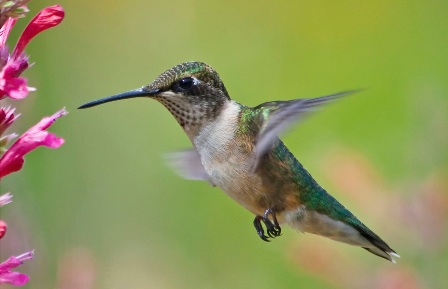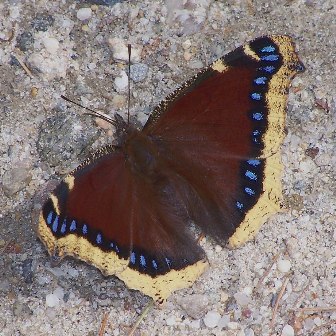 There are many highlights of spring bird migration, but it’s often one of the smallest birds that makes the biggest impression!
There are many highlights of spring bird migration, but it’s often one of the smallest birds that makes the biggest impression!
Every year in late April, early May ruby-throated hummingbirds return to Massachusetts after spending their winter in Central America.
Identifying Hummingbirds
The male ruby-throated hummingbird is unmistakable, with glossy green feathers and a stunning red “gorget” (the area below the beak) that glitters like its namesake. The females may lack the ruby throat, but they are just as easy to ID: this species is the type of hummingbird that nests in the eastern United States.
Attracting Hummingbirds
To bring these jewel-like birds to your yard, make sure there’s lots of food on hand—and we mean a lot. According to the Cornell Lab of Ornithology, they consume their own weight in sugar water or nectar every day, and that’s on top of thousands of insects.
A hummingbird feeder is a good way to start. A few tips:
- If you haven’t put the feeder out already, do so now. Our experts note that you can put out hummingbird feeders as early as the last week in April, but early May works just as well.
- Make your own nectar by combining 4 parts boiling water with 1 part sugar. Make sure it’s cool before you put it in the feeder; save leftovers in the fridge.
- The color of the nectar is not important. It’s the red color of the feeding port that attracts the hummingbirds.
- Clean your feeder at least once a week.
- Don’t fret about ants in your feeder. The hummingbirds will eat them for lunch!
You can also grow flowers that provide nectar for hummingbirds. Two options are native bee balm (Monarda) and purple coneflowers (Echinacea). If you have the space, try to plant different flower varieties so that there are blooms throughout the warm months. Your hummingbirds will be happy, and you will be, too.
Do you attract hummingbirds to your yard? Tell us how in the comments! And be sure to report any hummingbird sightings in our Hummingbird Reporting Tool.
Need a feeder? Pick one up either at the Audubon Shop in Lincoln or order one online.
Photo © Richard Reynolds


